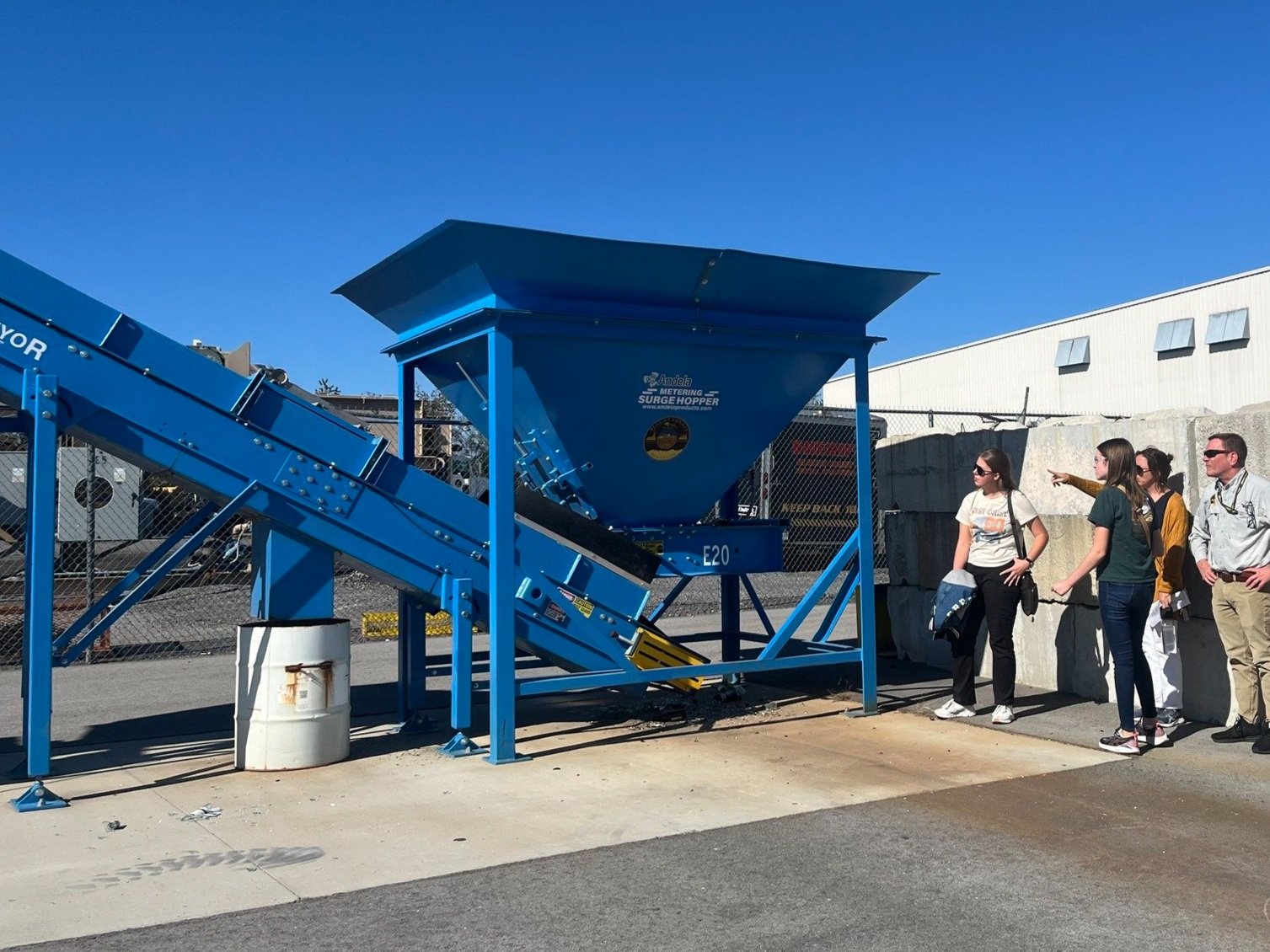By Genesis Haller and Brittney Whipple
Blount County is striving toward a more sustainable future with recycling programs that transform waste into valuable resources. From glass recycling to tire waste repurposing, these initiatives reduce landfill contributions and create materials that benefit local infrastructure and save resources.
Blount County Glass Recycling Program
Blount County’s glass recycling efforts began in September 2022, allowing residents to drop off their glass at the Recycling Center. This program, managed by the Blount County Highway Department, has expanded to collect glass from Monroe County, Blackberry Farm, 4th and Glass, and the University of Tennessee’s Office of Sustainability public drop-off.
Glass pulverizer at the Blount County Highway Department
A specialized glass pulverizer purchased through an EPA Solid Waste Management Assistance Grant is used to process up to 10 tons of glass per hour. This produces a byproduct in various sizes from fine sand to 3/8 inch gravel with rounded edges, making it safe for multiple uses.
Pulverized glass fresh out of the machine
What can you do with recycled glass?
The 3/8th inch glass gravel will be used in highway projects as a substitute for aggregate, shoulder stone, pipe bedding, and underlay for walking trails.
The Highway Department recently used the finer sanded material in winter treatments of our roads. Testing will soon be underway to use this finer material to improve the reflectivity of the paint used in road striping. This finer sanded product will also benefit non-highway-related projects as well, such as grouting, landscaping, sandblasting, playgrounds, and even sand traps on golf courses. The Highway Department is also working with the University of Tennessee’s Department of Agriculture to test the use of the finer sand as a soil amendment.
3/8 inch, fine, and super fine recycled glass product
Benefits of Glass Recycling
Glass waste is sourced locally, reducing transportation emissions.
Recycled glass replaces purchased materials, which saves county funds.
Helps preserve natural resources (quarry rock)
Ability to quantitatively measure the amount of glass waste diverted from the landfill (around 355,000 lbs so far!)
Tire Recycling and its Uses
Tire waste presents a unique challenge, as it cannot be disposed of in landfills. Through a partnership with Liberty Tire Recycling and support from a TDEC grant, Blount County is tackling this issue with the tire recycling program.
The recycling process begins at the Blount County landfill, where tires are collected and picked up by Liberty Tire. These tires are transported to Liberty Tire’s facility in Calhoun, Georgia.
For a tire to be recycled, it is first shredded and the steel wire is pulled out with magnets. The steel wire is baled and sold to rebar manufacturers, while the rubber is turned into crumb and sold in 1-ton bags. This rubber is now ready to be repurposed for various uses, such as:
Sports Surfaces: Tracks and turfs
Playgrounds: Rubber mulch
Molded Products: Items like hoses and barriers.
Tire-derived Fuel
Asphalt Rubber
Asphalt Rubber
The Blount County Highway Department will then purchase the recycled tire product from Liberty Tire. This product, SmartMix, will be sent to Harrison Construction, who paves Blount County roads. The SmartMix product will be incorporated into asphalt, producing roads that are:
Durable: Lasts longer and is more resistant to cracks, fading, and temperature fluctuations.
Quieter: Reduces road noise.
Safer: Less splash and spray during wet conditions.
This initiative, funded by a TDEC grant, partners with the University of Tennessee Department of Engineering to optimize the mix for local roads.






















